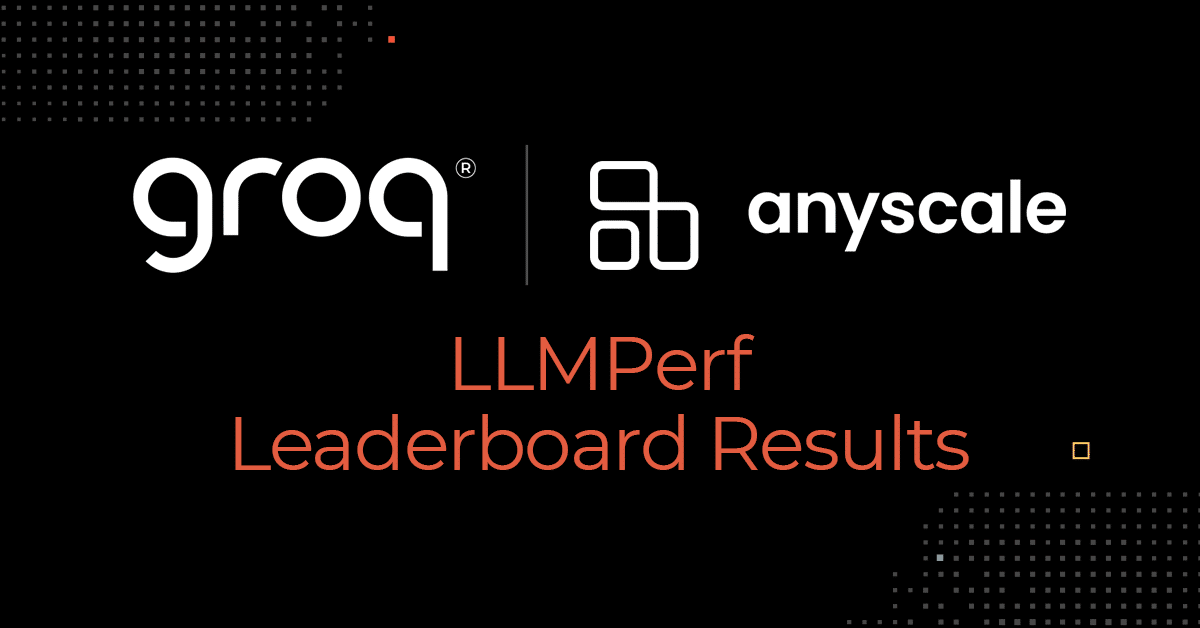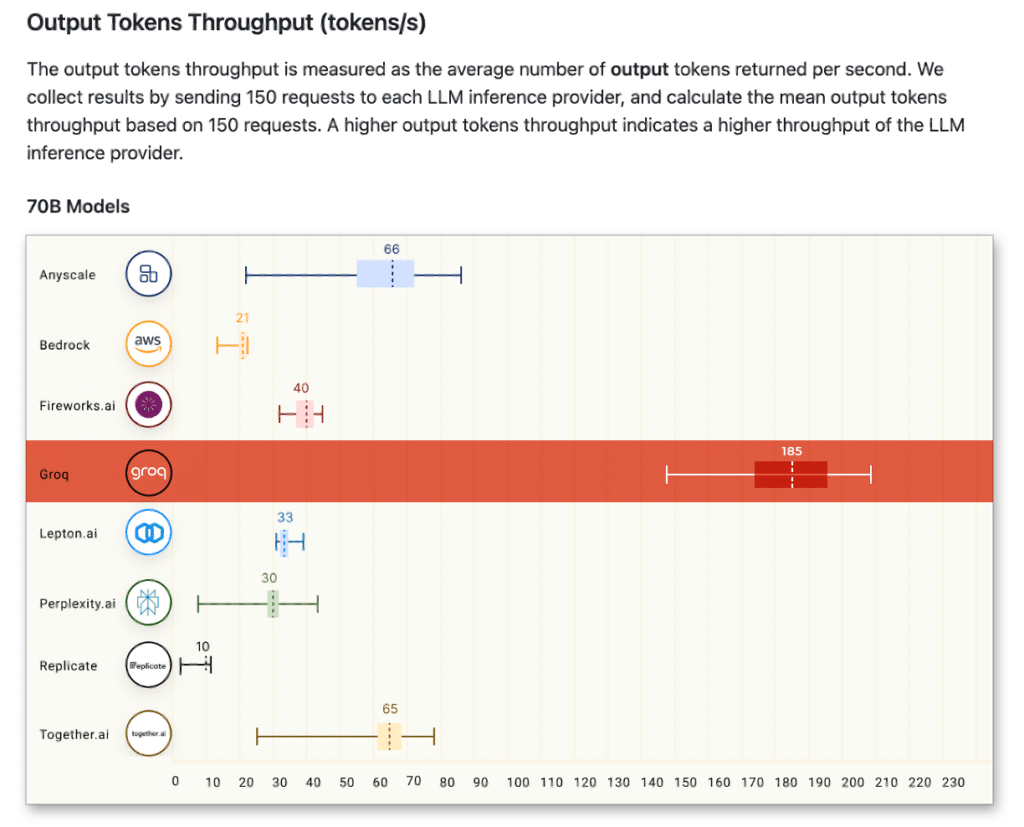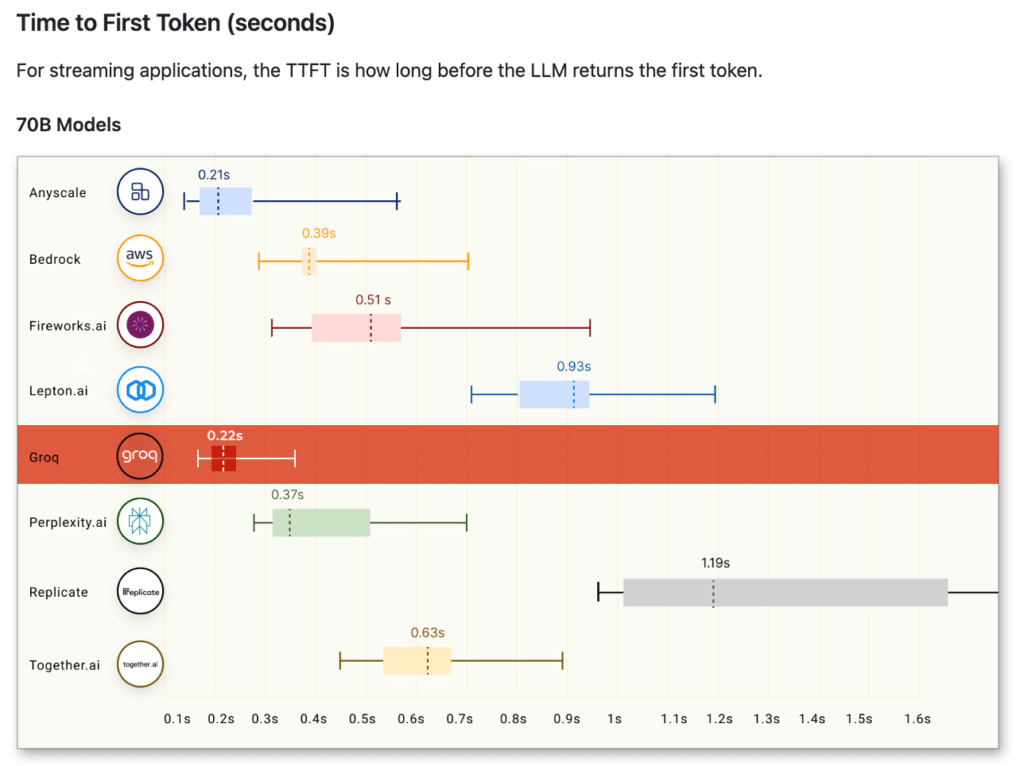Groq Delivers up to 18x Faster LLM Inference Performance on Anyscale’s LLMPerf Leaderboard Compared to Top Cloud-based Providers
Hey Groq Prompters! We’re thrilled to announce that Groq is now on the LLMPerf Leaderboard by Anyscale, a developer innovator and friendly competitor in the Large Language Model (LLM) inference benchmark space. This benchmark includes a selection of LLM inference providers and the analysis focuses on evaluating for performance, reliability, and efficiency measured by:
- Output Tokens Throughput (tokens/s): The average number of output tokens returned per second. This metric is important for applications that require high throughput, such as summarization and translation, and easy to compare across different models and providers.
- Time to first token (TTFT): The duration of time that LLM returns the first token. TTFT is especially important for streaming applications that require low latency such as chatbots.
Not only is this our first public benchmark – it was a huge success. Meta AI’s Llama 2 70B running on the Groq LPU™ Inference Engine outperformed all other cloud-based inference providers at up to 18x faster for output tokens throughput.
Let’s walk through the Anyscale methodology in a bit more detail. This benchmark leverages:
- A 550 input token count and a 150 output token count
- The first metric, Output Tokens Throughput (aka the output speed) is determined by dividing the count of output tokens by the overall end-to-end time, which includes input tokens processing time and overall network latency.
- For a full list of caveats and disclaimers for this benchmark, please refer to the documentation here.
On our end, we’d like to note:
- All Llama 2 calculations on the LPU are done in FP16, but we store some of the weights in FP8.
- We have no sparsity (i.e. we’re doing ALL of the Llama 2 matrix calculations and thus processing the entire model as provided by Meta AI).
- This is noteworthy in general as FP16 should provide a higher quality of results for inference.
Now let’s look a bit more closely at the results for each metric.
For Output Tokens Throughput, Groq achieved an average of 185 tokens/s, a result that ranges 3-18x faster than any other cloud-based inference provider contributing to the leaderboard.
For Time to First Token, we hit 0.22s. Because of the deterministic design of the LPU, response times are consistent resulting in our API providing the smallest range of variability. This means more repeatability and less effort designing around potential latency issues or slow responses.
Interested in API Access?
GroqCloud™ has multiple levels of API access. Learn more here.


